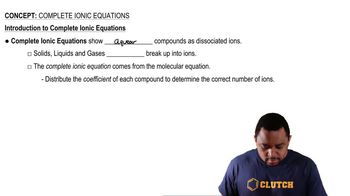Here are the essential concepts you must grasp in order to answer the question correctly.
First-Order Kinetics
First-order kinetics describes a reaction where the rate is directly proportional to the concentration of one reactant. The rate law can be expressed as rate = k[X], where k is the rate constant. The integrated rate law for a first-order reaction allows us to calculate the concentration of the reactant at any time, which is essential for determining how much reactant remains at specific intervals.
Recommended video:
Arrhenius Equation
The Arrhenius equation relates the rate constant of a reaction to temperature, expressed as k = A * e^(-Ea/RT), where A is the pre-exponential factor, Ea is the activation energy, R is the gas constant, and T is the temperature in Kelvin. This equation indicates that increasing the temperature generally increases the rate constant, thereby accelerating the reaction. Understanding this relationship is crucial for determining the minimum temperature needed to achieve the desired conversion by a specific time.
Recommended video:
Reaction Completion and Time Management
In chemical kinetics, managing the time required for a reaction to reach completion is vital, especially when aiming for a specific concentration of reactants. By analyzing the remaining concentration of reactant X at different times and applying the first-order kinetics and Arrhenius equation, one can estimate the necessary conditions to achieve the target concentration within the desired timeframe. This involves calculating the required rate constant and subsequently the temperature needed to meet the reaction completion goal.
Recommended video:




